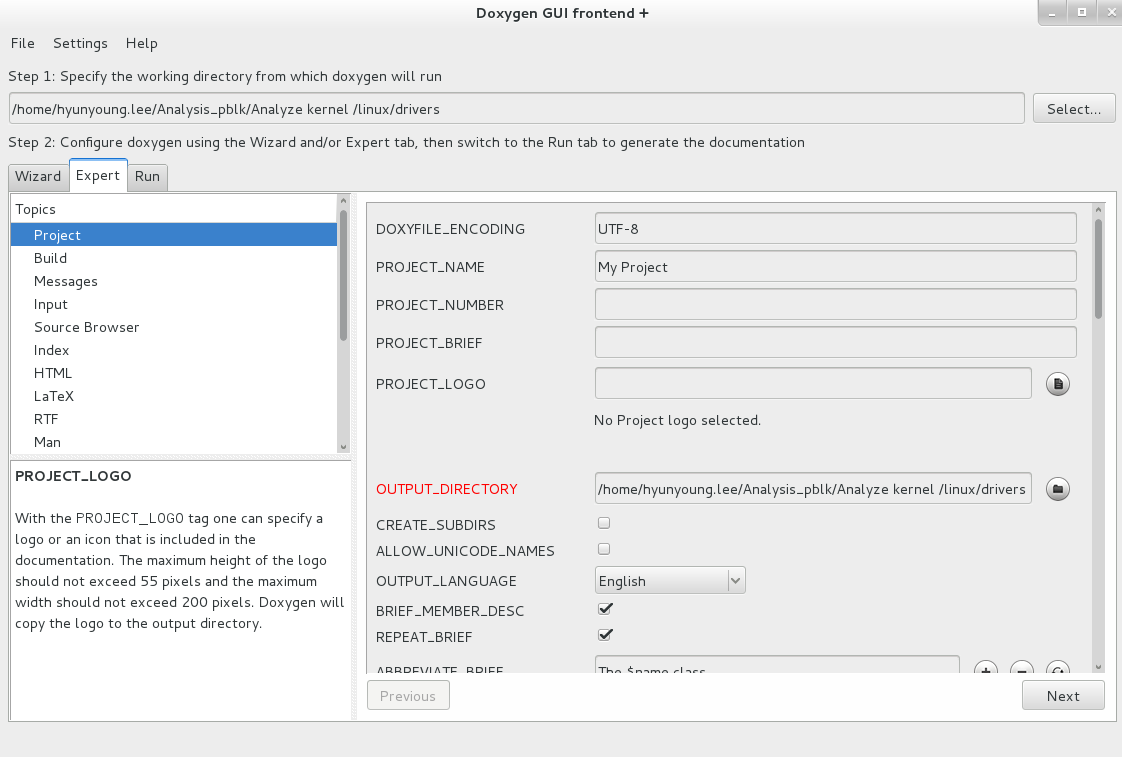

- #DOXYGEN MAKEFILE HOW TO#
- #DOXYGEN MAKEFILE INSTALL#
- #DOXYGEN MAKEFILE SOFTWARE#
- #DOXYGEN MAKEFILE CODE#
#DOXYGEN MAKEFILE INSTALL#
Step 1: Download and install Doxygen on Linux
#DOXYGEN MAKEFILE HOW TO#
In this article, our focus will be on how to get started to actually start using Doxygen.
#DOXYGEN MAKEFILE SOFTWARE#
In other words, Doxygen is a software specifically made to fulfill the need for producing and maintaining documentation with as little effort as possible. and delivers in various formats like HTML, PDF, etc. What is Doxygen? Doxygen is a software used to produce documentation of source code written in C, C++, Python, Java, etc. Let us start by looking at what Doxygen is. In this tutorial, let us learn about the Documentation software Doxygen and see how to make use of it to make the job of producing documentation more automated and stress-free! Once you have edited the makefile, you can use all the flags that can be used in SCIP to compile your code, see Building SCIP using the Makefile system.adjust the source file names ( MAINOBJ).specify a correct path to the SCIP root ( SCIPDIR).Open the Makefile via kate Makefile and edit the following variables at the top to have a compilable code:.If CMake should be unavailable on your targeted platform, try the classic Makefile system of SCIP. For the CMake equivalents of all the flags that can be used in SCIP, see Building SCIP using CMake. DSCIP_DIR=./scip/Release and compile using the make command. For instance, type mkdir Release cd Release cmake. Create a new subdirectory, jump to the new directory and use cmake specifying your SCIP directory.Open the CMakeLists (some examples projects have a subdirectory "check" for testing) via kate CMakeLists.txt & kate check/CMakeLists.txt # if check/CMakeLists.txt is available and replace all instances of the copied project's name (e.g.It is recommended for all new users to use the CMake build system configuration, if available on their platform. SCIPProject from the SCIP root directory for copying the content of the Binpacking-example into a fresh directory named SCIPProject in the parent directory of the SCIP root directory and jumping to the new SCIPProject directory rightafter. For instance, type cp -r examples/Binpacking/. Copy one of the examples in the examples directory (in the SCIP root directory).More examples can be found in the list of Examples. The LOP example is a branch-and-cut-code in C.The TSP example is a branch-and-cut-code in C++.The Binpacking Example and the Coloring application are branch-and-cut-and-price (column generation)-codes in C.The Vehicle Routing Problem Example is a branch-and-cut-and-price (column generation)-code in C++.We suggest the use of one of the following examples: The example should be chosen depending on the programming language ( C or C++) and the purpose ( branch-and-cut or branch-and-cut-and-price) of your project.

Below, you find some hints of how to start such a project. SCIP already provides a number of existing code examples which we suggest as both reference and starting point for these kinds of projects. SCIP can also be used for writing your own branch-and-cut or branch-and-cut-and-price code. Instructions on how to write a new plugin and include it in SCIP can be found in the corresponding How to add. SCIP can also be customized to the type of problems you are working on by additional plugins. Once you succeeded installing SCIP together with an LP-solver on your system, you have a powerful tool for solving MIPs, MIQCPs, MINLPs, etc.


 0 kommentar(er)
0 kommentar(er)
